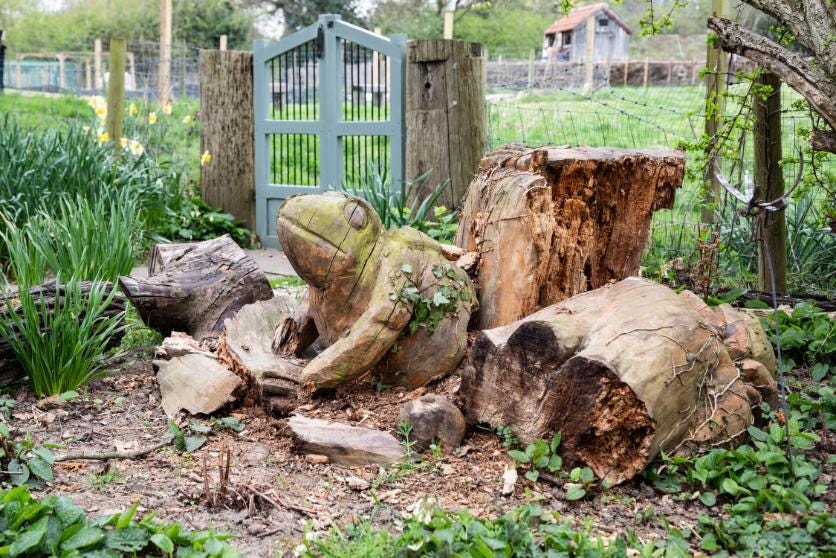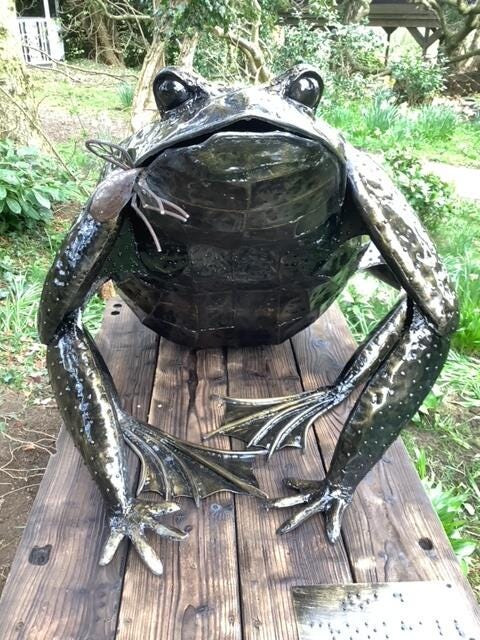Toad of Crook Hall
Tony Henderson on the riveting tale of a hall’s new toad.
With echoes of Wind in the Willows and not a weasel in sight, Toad has returned to his hall.
A specially commissioned 5ft sculpture of a toad was unveiled at the National Trust’s Crook Hall Gardens in Durham, designed by artist, blacksmith and sculptor, Graeme Hopper.
The toad is made from mild steel, galvanised then covered with an additional shiny coating, giving the amphibian’s warty skin the impression that it has just emerged from a pond.
The words ‘Toad, Crook Hall’ appear in relief and in braille on a plaque, and it is shown in the act of eating a fly.
The sculpture replaces a wooden toad, a feature of the gardens for many years before it began to decay.
County Durham-based Graeme said: “I wanted to make the toad realistic, but not so realistic that it would frighten visiting kids.”

Ann Tulloch, National Trust senior gardener at Crook Hall said: “Gardens are an increasingly important habitat for toads, especially those with a pond where they can breed in spring.
“In return, toads are a great help to gardeners because they eat slugs and snails. The old wooden toad was much loved and hasn’t been forgotten as we have moved him to a new spot in the gardens, where he’ll provide a home for insects and fungi as he rots. Being metal, our beautiful new toad will have a much longer lifespan.”
Acquired and opened in 2022, Crook Hall Gardens is the only National Trust house or garden in County Durham.
The property is on the edge of the city and Durham World Heritage Site. A series of interlinking gardens, each with its own style and character, is set against the backdrop of a Grade I listed medieval hall.
Visitors can discover a maze, a secret walled garden, an orchard, a moat pool, tranquil seating areas and views of the city and Durham Cathedral. A second-hand bookshop is housed in the hall’s Jacobean Room. Entry to The Garden Gate café is free, offering seating indoors and an outdoor terrace.
A project is underway to create a nature-rich green corridor from Crook Hall Gardens, linking the city to the wider countryside.
The toad sculpture, along with a pair of new wooden garden benches, was funded by the County Durham Centre for the National Trust.
The Centre was established in 1970 as a voluntary association supporting the National Trust. It offers an active programme of summer outings, social events throughout the year and talks during the winter.
Since its launch in 1970, the group has contributed thousands of pounds in funding towards National Trust projects in the North East, at places including Lindisfarne Castle, Wallington, Seaton Delaval Hall, Gibside, Washington Old Hall and Souter Lighthouse & The Leas.
Gay Neale, chairman of the County Durham Centre, said: “We were delighted to be able to provide the funding to allow the toad sculpture to be made. All our money is raised by our group through membership fees, social activities and outings. All profit is used to support local National Trust projects.”
It's not necessary to be a National Trust member to join the County Durham Centre. For details email nealegaynor@aol.com




